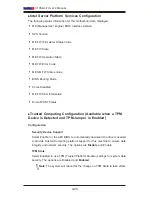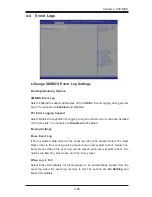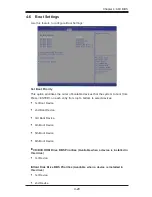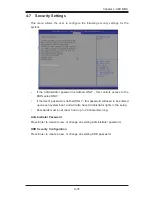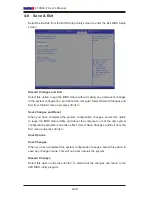
Chapter 4: AMI BIOS
4-19
Select Disabled to prevent system boot using a device installed in a LAN port to
boot the system. The options for Onboard LAN1 Option ROM are Disabled,
PXE
and iSCSI. The options Onboard for LAN2 Option ROM are PXE and
Disabled
.
Network Stack
Select Enabled enable PXE (Preboot Execution Environment) or UEFI (Unified
Extensible Firmware Interface) for network stack support. The options are Enabled
and
Disabled
.
VGA Priority
This feature allows the user to select the graphics adapter to be used as the primary
boot device. The options are
Onboard
, and Offboard.
Ipv4 PXE Support (Available when Network Stack is set to Enabled)
Select Enabled to enable Ipv4 PXE (Preboot Execution Environment) for boot sup-
port. If this feature is set to Disabled, Ipv4 PXE boot option will not be supported.
The options are
Enabled
and Disabled.
Ipv6 PXE Support (Available when Network Stack is set to Enabled)
Select Enabled to enable Ipv6 PXE (Preboot Execution Environment) for boot sup-
port. If this feature is set to Disabled, Ipv6 PXE boot option will not be supported.
The options are Enabled and
Disabled.
ACPI Settings
High Precision Event Timer
Select Enabled to activate the High Performance Event Timer (HPET) that produces
periodic interrupts at a much higher frequency than a Real-time Clock (RTC) does in
synchronizing multimedia streams, providing smooth playback and reducing the de-
pendency on other timestamp calculation devices, such as an x86 RDTSC Instruc-
tion embedded in the CPU. The High Performance Event Timer is used to replace
the 8254 Programmable Interval Timer. The options are
Enabled
and Disabled.
WHEA Support
This feature Enables the Windows Hardware Error Architecture (WHEA) support for
the Windows 2008 (or a later vision) operating system. The options are
Enabled
and Disabled.
















